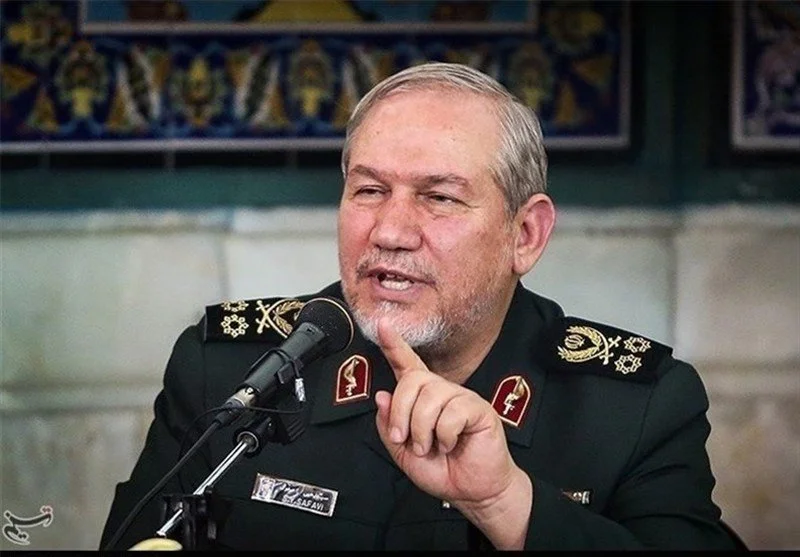Iran’s Post-War Strategy: Threats, Nuclear Maneuvering, and the Space Domain
Executive Summary
Following the June 2025 war with Israel and the United States, Iran has adopted a three-pronged strategy to project resilience: issuing escalatory military threats, leveraging nuclear diplomacy to resist sanctions, and prioritizing an ambitious space program with Russian support. This approach allows Tehran to signal strength regionally while hedging against strategic isolation, though it also increases the risk of renewed conflict and accelerates competition in emerging domains like space.
Key Judgments
Iran is framing the 12-day war as a “victory” to project deterrence despite significant damage to its nuclear infrastructure.
Evidence: IRGC Deputy Commander Ali Fadavi declared that U.S. and Israeli forces “suffered a miscalculation” and failed to achieve their objectives, while citing Iran’s missile strikes as proof of strength (Al Manar).
Tehran is actively preparing for the possibility of renewed conflict, emphasizing offense as the best form of defense.
Evidence: Senior adviser Rahim Safavi stated that Iran remains in a “state of war” and must strengthen capabilities in missiles, drones, cyber, and diplomacy, warning that the situation “may collapse at any moment” (Tasnim).
Iran is pursuing conditional nuclear diplomacy while resisting European and U.S. pressure, using IAEA talks as leverage.
Evidence: Foreign Ministry spokesman Esmail Baqaei said Tehran would provide assurances of peaceful intent only if sanctions were lifted, while rejecting European threats to trigger snapback sanctions (Türkiye Today).
Iranian officials are escalating long-range strike rhetoric, likely as psychological warfare aimed at Europe and the U.S.
Evidence: Lawmaker Amir Hayat-Moqaddam warned that Iran’s missiles can already hit European capitals and may soon threaten U.S. cities via naval deployment, stating, “perhaps our next missile will hit Washington directly” (Newsweek).
Iran is prioritizing space as a new strategic frontier, with Russian cooperation accelerating its program and raising proliferation concerns.
Evidence: Tehran confirmed autumn launches of two satellites aboard a Russian Soyuz, while building a 54-square-mile spaceport at Chabahar, a project experts warn could enhance ICBM precision and reduce time-to-launch (Tasnim; Times of Israel).
Analysis
Iran’s post-war strategy reflects both vulnerability and adaptability. By declaring the June conflict a victory, Tehran seeks to maintain deterrence despite the reality that U.S. and Israeli strikes set its nuclear program back years. The IRGC’s messaging is designed less for external audiences than for domestic cohesion and regional allies, reinforcing the narrative that Iran can withstand Western aggression.
Iran’s military leadership is simultaneously warning of renewed war, creating a climate of perpetual mobilization. This “constant readiness” posture serves multiple purposes: it justifies high defense spending, deters adversaries, and sustains revolutionary legitimacy. Yet it also increases the likelihood of miscalculation, particularly as commanders embrace offense as a core doctrine.
On the nuclear front, Tehran’s dual-track approach—engaging with the IAEA while threatening to outlast sanctions—suggests it will use diplomacy as a delaying tactic rather than a genuine commitment to transparency. By conditioning cooperation on sanctions relief, Iran is seeking to exploit divisions between the U.S. and Europe. However, the risk of snapback sanctions remains a real constraint.
The most concerning development is Iran’s space strategy. Partnering with Russia, Iran is rapidly advancing its space-launch capabilities, which have direct applications to missile precision and strike capacity. A functional spaceport at Chabahar would reduce reliance on foreign launchers, expand Iran’s satellite constellation, and potentially enable global power projection. In the context of Russia’s increasing use of space warfare and China’s lunar ambitions, Iran’s entry into the space race aligns with broader trends where space is becoming a contested warfighting domain.
Iran’s missile rhetoric adds another destabilizing element. By openly threatening Europe and the U.S., Iranian lawmakers are signaling deterrence while simultaneously raising international urgency to constrain Tehran. These threats, combined with real advances in delivery systems, suggest Iran is preparing both for psychological influence campaigns and for future strategic bargaining power.
Overall, Iran is adapting to its post-war environment by diversifying its deterrence toolkit—balancing asymmetric military threats, conditional nuclear diplomacy, and emerging space capabilities. This layered strategy ensures Tehran remains relevant as a regional power while complicating U.S. and Israeli calculations. Yet it also heightens the risk of conflict escalation across multiple domains simultaneously.


